Discover 35 hidden attractions, cool sights, and unusual things to do in Colombo (Sri Lanka). Don't miss out on these must-see attractions: National Zoological Gardens of Sri Lanka, Galle Face Green, and Kelaniya Raja Maha Vihara. Also, be sure to include Gangaramaya Temple in your itinerary.
Below, you can find the list of the most amazing places you should visit in Colombo (Colombo).
Table of Contents
National Zoological Gardens of Sri Lanka
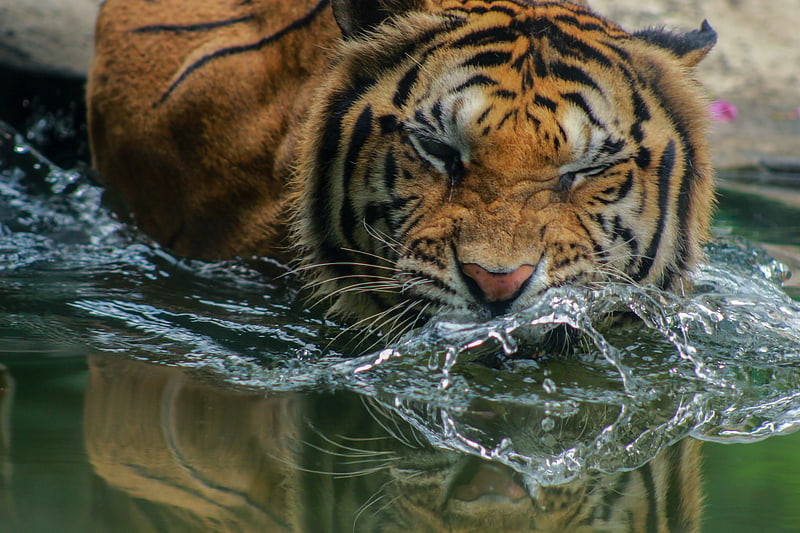
Also known as: දෙහිවල ජාතික සත්වෝද්යානය
Landscaped zoo with a butterfly garden. National Zoological Gardens of Sri Lanka is a zoological garden in Dehiwala, Sri Lanka, founded in 1936. Its sprawling areas are host to a variety of animals and birds. The zoo exhibits animals but also places an emphasis on animal conservation and welfare, and education. The current Director-General of the zoo is Shermila Rajapaksha.
The zoo has 3000 animals and 350 species as of 2005. The annual revenue is LKR 40 million.
The zoo dehiwala exchanges its residents with other zoological gardens for breeding purposes. In June 2021, it was reported that a lion named Thor which has been living in the zoo since 2012 has reportedly tested positive for COVID-19.[1]
Address: Anagarika Dharmapala Mawatha, 10350 Colombo
Galle Face Green
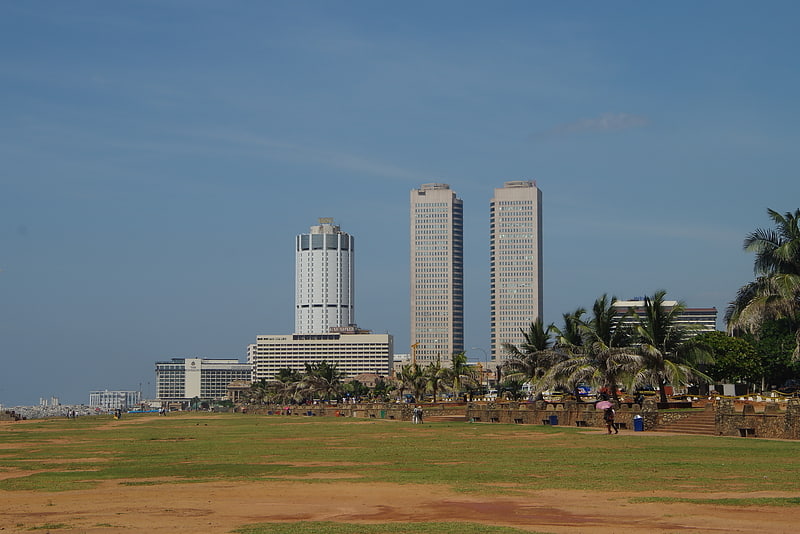
Also known as: ගාලු මුවදොර පිටිය
Scenic waterfront area with food stalls. Galle Face is a 5 ha ocean-side urban park, which stretches for 500 m along the coast, in the heart of Colombo, the financial and business capital of Sri Lanka. The promenade was initially laid out in 1859 by Governor Sir Henry George Ward, although the original Galle Face Green extended over a much larger area than is seen today. The Galle Face Green was initially used for horse racing and as a golf course, but was also used for cricket, polo, football, tennis, and rugby.[2]
Address: Colombo, Western, Sri Lanka, 00300 කොළඹ (District 2B)
Kelaniya Raja Maha Vihara

Also known as: කැලණිය රජ මහා විහාරය
Buddhist temple in Peliyagoda, Sri Lanka. The Kelaniya Raja Maha Vihara or Kelaniya Temple is a Buddhist temple in Kelaniya, Sri Lanka. It is located 11 km north-east of Colombo. The current chief incumbent is Venerable Professor Kollupitiye Mahinda Sangharakkhitha Thera.
The temple has often been associated with the rise and fall of Ceylon / Sri Lanka, with the popular saying that as the Kelaniya temple rose, Sri Lanka rose and as it fell, the country and its administration fell. It has thus had a deep association with the political powers of the country.
It is also infamous for Mapitigama Buddharakkitha, the chief conspirator of the 1959 assassination of Ceylon's fourth Prime Minister S. W. R. D. Bandaranaike. Buddharakkitha was the chief incumbent (chief priest) of the Kelaniya Raja Maha Vihara from 1947 to 1959.[3]
Gangaramaya Temple
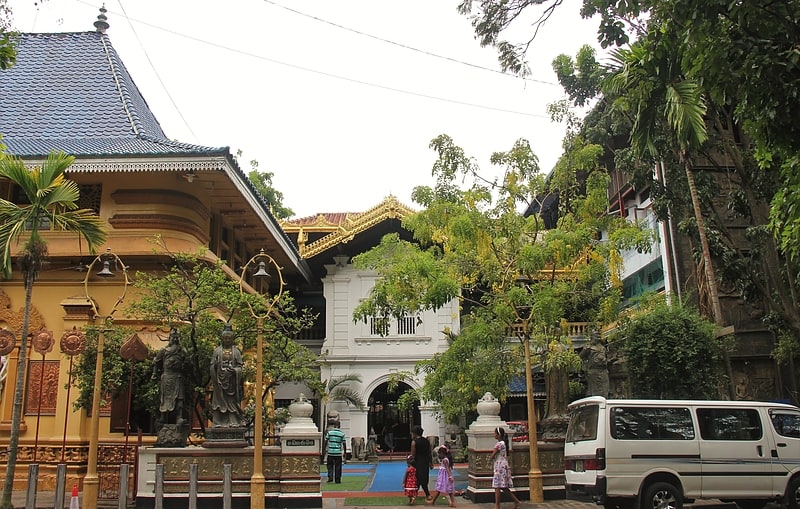
Also known as: ගංගාරාමය
Temple in Colombo, Sri Lanka. Gangaramaya Temple is one of the most important temples in Colombo, Sri Lanka, being a mix of modern architecture and cultural essence. Located on the Beira Lake, it was completed in the late 19th century.[4]
Address: Gangarama Rd., 00200 කොළඹ (District 2B)
Seema Malaka
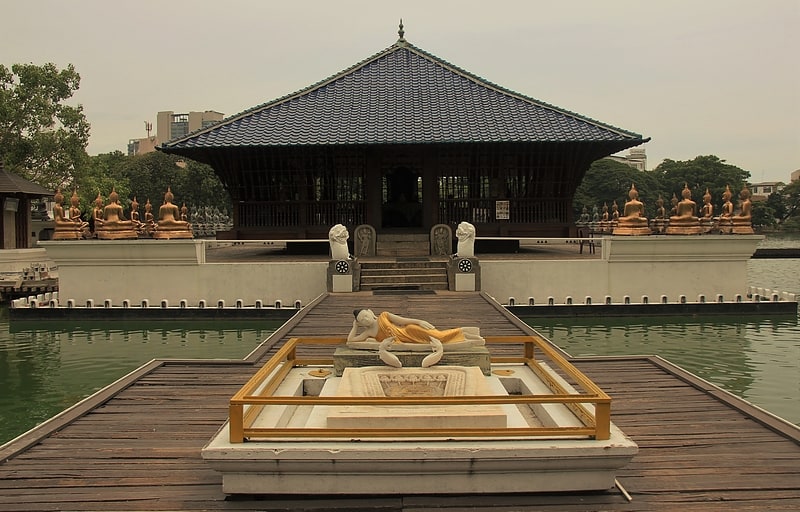
Temple in Colombo, Sri Lanka. Seema Malaka is a Buddhist temple in Colombo, Sri Lanka. The temple is mainly used for meditation and rest, rather than for worship. Situated in the Beira Lake, the temple was originally constructed in the late 19th century. Seema Malaka is a part of the Gangaramaya Temple and is situated few hundred meters to its east.[5]
Address: Sir James Pieris Mawatha, Colombo (District 2B)
R. Premadasa Stadium
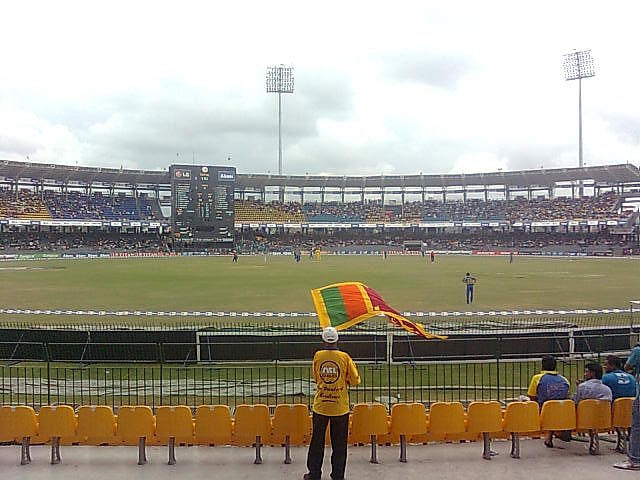
Also known as: ආර්. ප්රේමදාස ක්රීඩාංගණය
Stadium in Colombo, Sri Lanka. The R. Premadasa International Cricket Stadium is a cricket stadium on Khettarama Road, Maligawatta, Colombo, Sri Lanka. The stadium was, before June 1994, known as the Khettarama Cricket Stadium and is today one of the main venues where the Sri Lankan cricket team play, having hosted more than 100 one day international matches. It is the largest stadium in Sri Lanka with a capacity of 40000 spectators. It has hosted the 2012 ICC World Twenty20 finals between Sri Lanka and West Indies, 2002 ICC Champions Trophy finals between Sri Lanka and India and first semi final of the 2011 ICC Cricket World Cup between Sri Lanka and New Zealand. This was where the highest Test score in the history was recorded; 952 by Sri Lanka against India. With capacity exceeding The Lord's stadium in England, the stadium is known as the "home of Sri Lankan cricket".[6]
Address: Khettarama Road, Colombo (District 2A)
Floating Market
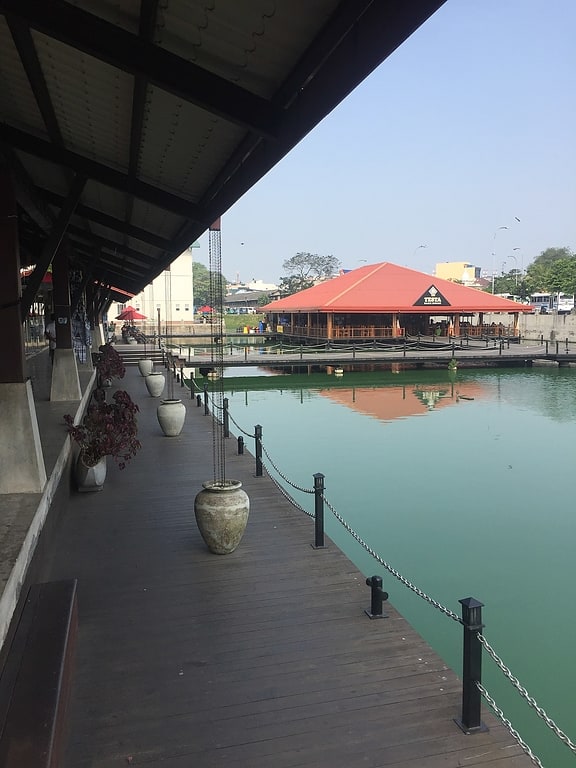
Floating market in Colombo, Sri Lanka. The Pettah Floating Markets are located on Bastian Mawatha in Pettah, a neighborhood in Colombo, Sri Lanka, and consist of 92 trade stalls, with a number of the stalls established on boats on Beira Lake. The floating market serves as a tourist attraction selling local produce and local handicraft.
The development of the floating market and beautification works were carried out by the Urban Development Authority (UDA) at a cost of Rs. 150 million. Engineering units from the Sri Lanka Army in collaboration with the Urban Development Authority transformed Bastian Street, the street linking the Central Bus Stand in Pettah and the Colombo Fort railway station, into a green environment. The Sri Lanka Navy rehabilitated the polluted canal running alongside Bastian Street. The unique simple architecture of the stalls along the canal, designed by Thushari Kariyawasam, with grey cemented floors and minimalistic décor, tries to reflect the calm and undisturbed water of lake.
The markets were officially opened by the Minister of Health, Maithripala Sirisena, on 25 August 2014.
One of the objectives of the development was to relocate unlicensed street vendors off the footpaths, particularly in congested areas like the Pettah, where they had no facilities and were forcing pedestrians onto the road. Priority was given to those traders who were impacted by the redevelopment on Bastian Street. Businesses however have struggled at the floating markets due to high rents and low sales. Traders have also criticised the open nature of the stalls and boats, which restrict their ability to secure their goods overnight. The UDA has advised that it will be undertaking promotional campaigns and improving accessibility to the area in an attempt to improve visitations to the area.[7]
Colombo Port Maritime Museum

Museum in Colombo, Sri Lanka. The Sri Lanka Ports Authority Maritime Museum, commonly known as the Colombo Maritime Museum, is located at 19 Chaithya Road, Colombo, adjacent to the Colombo Port. The museum is operated and maintained by the Sri Lanka Ports Authority.
The museum is housed in a former Dutch prison, built in 1676, which is the only surviving Dutch period building within the Colombo Port area. The building has been refurbished and renovated to accommodate the artifacts at cost of Rs 25 million, as a result of the concept first presented by the Minister of Ports Development, Rehabilitation & Reconstruction, M. H. M. Ashraff. It was officially opened in August 2003, by the Minister of Shipping, Ports Development, Eastern Development and Muslim Religious Affairs, Rauff Hakeem.
Various items of historical significance relating to the ports of the country, it's maritime industry and the ocean around Sri Lanka are on display. Sculptures of King Vijeya and other significant characters are also on display along with model exhibits of ships.
There are also art works, and models symbolizing the systematic development of the Colombo Port and equipment used in Port operation during various times.[8]
Kanatte Cemetery
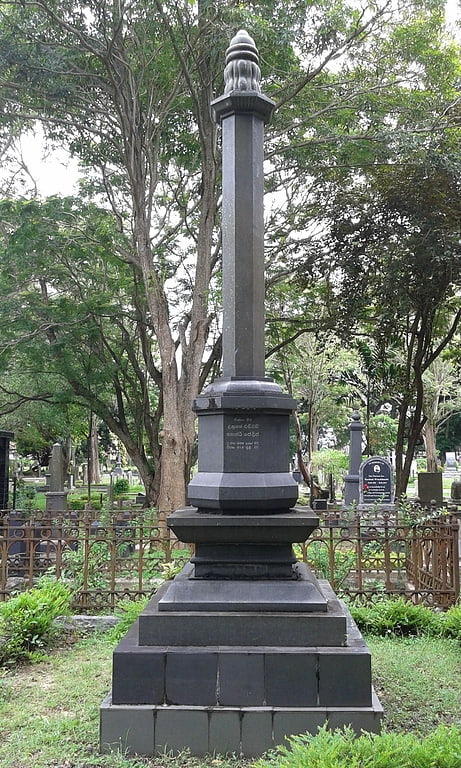
Kanatte Cemetery, also known locally as Borella Cemetery, is Colombo's main burial ground and crematorium.
It is located at the intersection of Elvitigala Mawatha (Narahenpita Road), Bauddhaloka Mawatha (Bullers Road) and D. S. Senanayake Mawatha (Baseline Road).
The 19.3 ha (48 acres) cemetery is owned and operated by the Colombo Municipal Council and contains a Commonwealth War Graves Plot with a number of additional war graves dispersed around the site. The war graves include those of a German soldier, a German merchant seaman, a German interned civilian and an Austrian nursing sister. There are over 60 World War I Commonwealth servicemen and nearly 300 World War II Commonwealth servicemen buried here.
The cemetery was established in 1866 and is the main place of burial for all religions and nationalities, with separate sections for Hindus, Buddhists, Shintos, Roman Catholics, Anglicans and non-denominational Christians. The first burial was in May 1866, prior to this most British burials occurred at the Galle Face Burial Grounds, an area near the current Presidential Secretariat building. In the 1920s, those graves were exhumed and the remains were interred at Kanatte.
The cemetery’s most famous Westerner interred at the cemetery is British-born science fiction writer Sir Arthur C. Clarke (1917-2008).[9]
National Planetarium
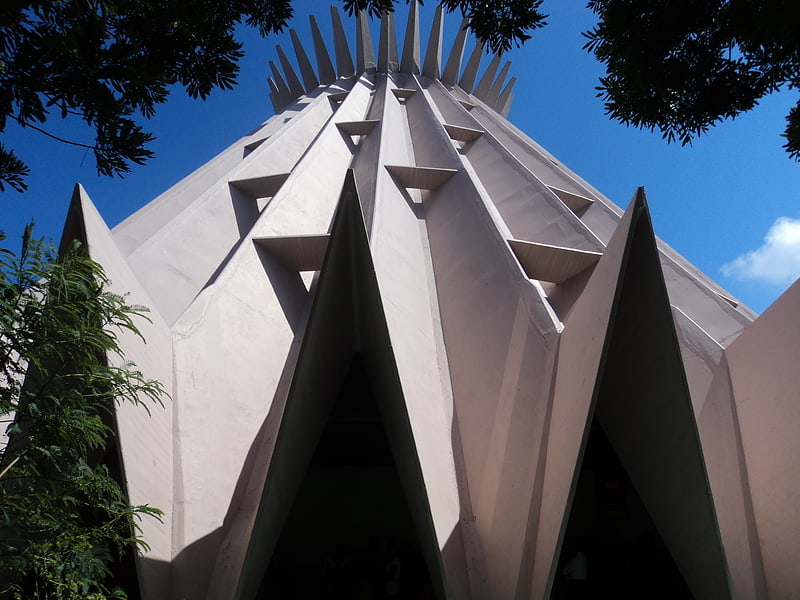
Planetarium in Colombo, Sri Lanka. Sri Lanka Planetarium is a public planetarium located in Colombo, Sri Lanka. It is the first and only planetarium in the country and maintained as an institute under the Ministry of Science, Technology and Research.
The Planetarium was established on 1 February 1965 by the State Engineering Corporation as a special feature for the Ceylon industrial exhibition held in Colombo same year. The planetarium was designed by the chief engineer from the State Engineering Corporation of Ceylon, A. N. S. Kulasinghe, and was constructed by engineers from Germany. The building takes elements from the Liverpool Metropolitan Cathedral (Sir Frederick Gibberd - 1960) and the Cathedral of Brasília (Oscar Niemeyer - 1960). The building has a reinforced concrete floor and a pre-stressed concrete folded plate roof, which was pre-cast on-site. The building was funded by the German Democratic Republic as a gift to Ceylon.
With the aid of a universal projector stationed at the centre of this building, the artificial sky is created on the domed screen above a 570-seat auditorium. The universal projector is a product of Carl Zeiss AG East Germany.[10]
Colombo Dutch Museum
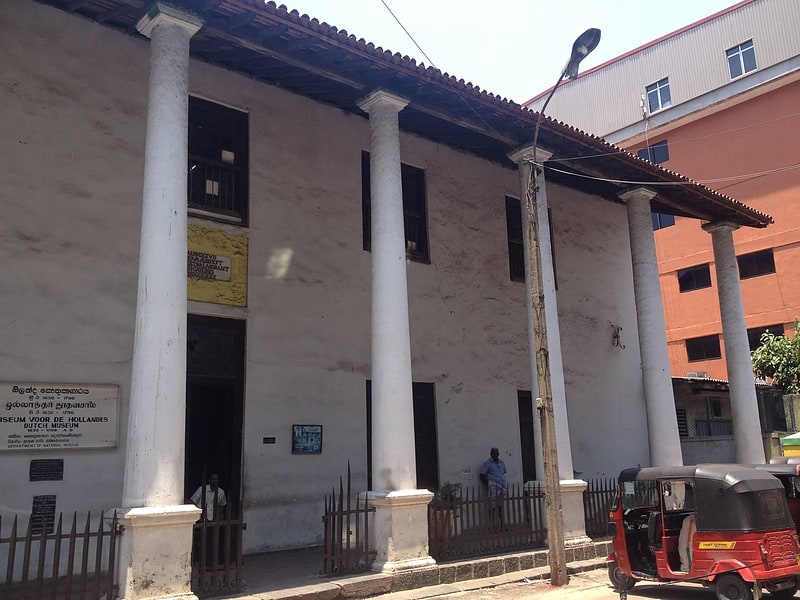
Museum in Colombo, Sri Lanka. The Colombo Dutch Museum is a museum that covers the history of the Dutch colonial rule in Sri Lanka.[11]
Address: Prince Street, 01100 Colombo (District 2A)
National Art Gallery
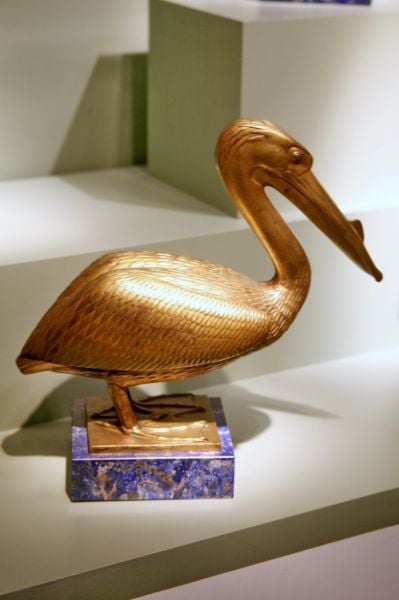
The National Art Gallery in Colombo, Sri Lanka was the first state-sponsored art gallery built in the country.
The gallery is located in Cinnamon Gardens near the Nelum Pokuna Mahinda Rajapaksa Theatre, Viharamahadevi Park, the National Museum of Colombo, the Town Hall, Colombo and Colombo Public Library.
The building comprises of a three wing gallery space: the main gallery has a permanent collection of portraits and landscapes and the two adjoining wings display temporary exhibitions by Sri Lankan artists. The eastern hall is approximately 32.9 m × 9.8 m (108 ft × 32 ft) and the western hall is approximately about 20.7 m × 9.4 m (68 ft × 31 ft). Both galleries have a 5.5 m (18 ft) ceiling height.
In 1911 the need for a national art gallery was first identified by the Ceylon Society of Arts and the Arts Council of Ceylon however its construction was delayed until after World War 1. The central gallery was completed and opened in March 1932. The building was designed by Gate Mudliyar A. C. G. S. Amarasekara. In 1952 the gallery was placed under the control of the Department of Cultural Affairs. In June 2013, the gallery's collection was reported to be in a very poor state of repair.[12]
Address: Nelum Pokuna Mawatha, Colombo (District 3)
St. Andrew's Presbyterian Church
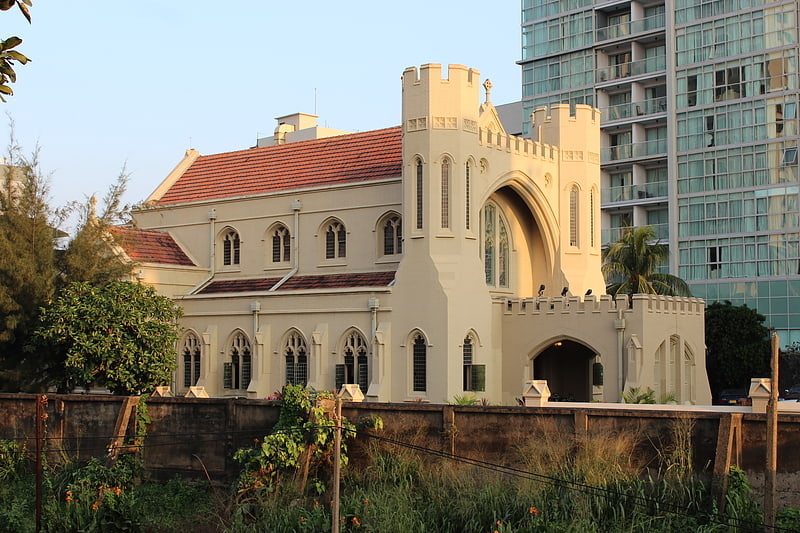
St. Andrew's Scots Kirk, is located at 73 Galle Road, Colombo. The church was founded in the late 19th century, and prospered during the colonial and post-colonial periods. It was the centre for the Scottish community in Colombo.
The first Presbyterian church in Ceylon, St. Andrew's Church, was built on Prince Street, Pettah (now known as Sir Baron Jayathilaka Mawatha). The foundation stone was laid on 26 February 1841 by the then Governor James Alexander Stewart-Mackenzie and the first church service was held on 21 August 1842. The inaugural pastor, Rev. Joseph Marsh, was also the first colonial chaplain of Ceylon. Towards the end of the 19th century many of the church's congregation left the country and returned to Scotland. As the congregation diminished and the Colombo fort area became more commercialised, a decision was made to relocate the church to a site in Colpetty.
The church's chaplain, Rev. Alexander Dunn, oversaw the acquisition of the site and the construction of the new church. The former church was demolished and the land sold to fund the new church (the former location is now the site of the Whiteaway, Laidlaw & Co. Building). The foundation stone was laid by Governor Sir Henry Arthur Blake on 16 August 1906.The church was designed by Edward Skinner, a Scottish born architect, and constructed by Walker Sons and Company. The sanctuary was built in a year and the church retained the name and emphasised the Scottish tradition by adding the phrase 'Kirk' which means church.
The exterior structure of the church is constructed of wood and stone and the tiled floor of the church is shaped like a cross. The church pews are made of teak. The stained glass in the church's windows arrived by steam ship from England in 1921. The main chancel window reflects the Crucifixion, the window behind the altar has images of Saint Paul, holding a bible and a sword and Saint Andrew. The south transept window contains images of Saint Sebastian and Saint Martin, and is dedicated to the troops of World War I. The west window, displaying the Ascension of Christ and is dedicated to Rev. Alexander Dunn.
The church is one of the few churches in the country that still has an operating pipe organ. In keeping with presbyterian traditions there is no altar in the church, instead there is a communion table. There are a number of marble memorial plaques on the walls, including a plaque in memory of the co-editor of The Ceylon Observer, Donald S. Ferguson, who died in Scotland in 1911. Another plaque is to James Curtis, the church's building supervisor, who died at sea in 1911.
Adjoining the church is a two-storey manse built in 1907, where the church's pastor resides.
In 1948, Sri Lanka received its independence from the British rule and in the following decades, most of the British and Scottish community in the country returned home to the United Kingdom, which drastically reduced the church's traditional European congregation. Realising the need for change, St Andrew’s moved from being predominantly European Presbyterian church to an international and interdenominational church.
In the late 1960s, the Rev. Andrew Baillie, was instrumental in opening the doors of the church to the locals. The congregation is now a mixture of Sri Lankans, expatriates and international visitors, and maintains an English-speaking Protestant form of worship and a keen interest in Christian social service in the midst of a largely non-Christian society. It maintained the label "Presbyterian" during a long period of independence, the former Presbytery of Ceylon having dissolved decades ago, but it is now associated with the International Presbytery in the Church of Scotland. It is one of only three churches outside Europe administered by the International Presbytery.[13]
Address: 73 Galle Rd, 00300 Colombo (District 2B)
Khan Clock Tower

Historical landmark in Colombo, Sri Lanka. The Khan Clock Tower was built in Colombo, Sri Lanka by the Khan Family of Bombay. The Clock Tower is a popular landmark and marks the entrance to Pettah Market. The Clock Tower was built in the early 20th century by the family of Framjee Bhikhajee Khan. This Parsi family hailed from Bombay, India and also owned the famous Colombo Oil Mills as well as other business interests in Ceylon, as Sri Lanka was then called.
The clock tower also provided a working water fountain, but this no longer functions. The plate on the clock tower carries the inscription: "This clock tower and fountain was erected to the memory of Framjee Bhikhajee Khan by his sons Bhikhajee and Munchershaw Framjee Khan as a token of affectionate gratitude and dedicated through the Municipal Council to the citizens of Colombo on the fourth day of January 1923, the 45th anniversary of his death."
The Tower is roughly four storeys high and is situated on a landscaped roundabout that marks the entrance to the famous market.[14]
Address: Sir Baron Jayathilaka Mawatha, Colombo (District 2A)
Jami Ul-Alfar Mosque
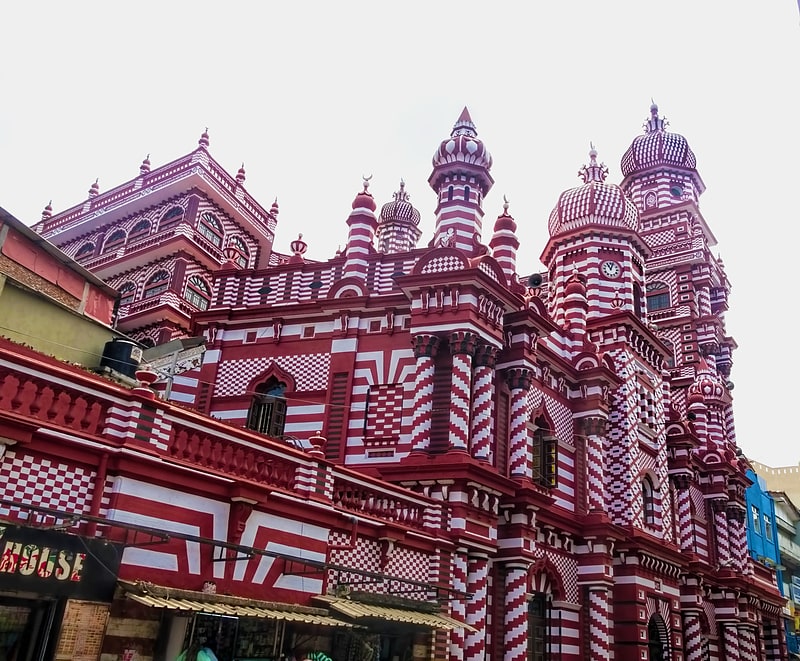
Also known as: ජමි උල්-අල්ෆාර් පල්ලිය
Mosque in Colombo, Sri Lanka. Jami-Ul-Alfar Mosque (Sinhala: කොලඹ කොටුව රතු පල්ලිය, romanized: Kolomba Kotuwa Rathu Palliya, Tamil: மஸ்ஜிதுல் ஜாமிஉல் அஃபார் அல்லது சம்மாங்கோடு பள்ளிவாசல், romanized: Sammankodu Pallivasal, is a historic mosque in Colombo, Sri Lanka. It is located on Second Cross Street in Pettah. The mosque is one of the oldest mosques in Colombo and a popular tourist site in the city.[15]
Address: Second Cross Street, 01100 Colombo (District 2A)
Navarangahala
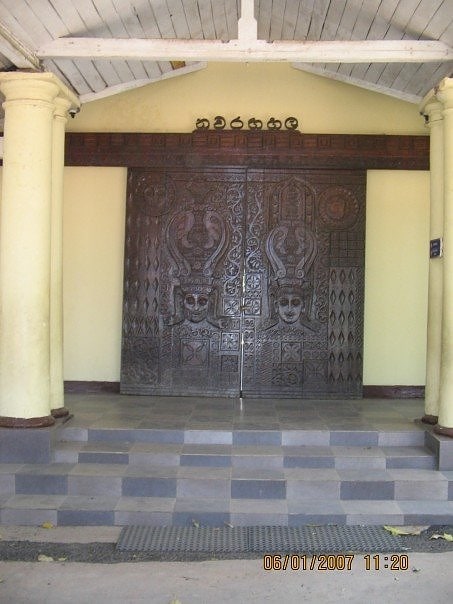
Also known as: නවරඟහල
Performing arts theater in Colombo, Sri Lanka. The Navarangahala, in Colombo, is one of the main national theatres of Sri Lanka.[16]
Viharamahadevi Park
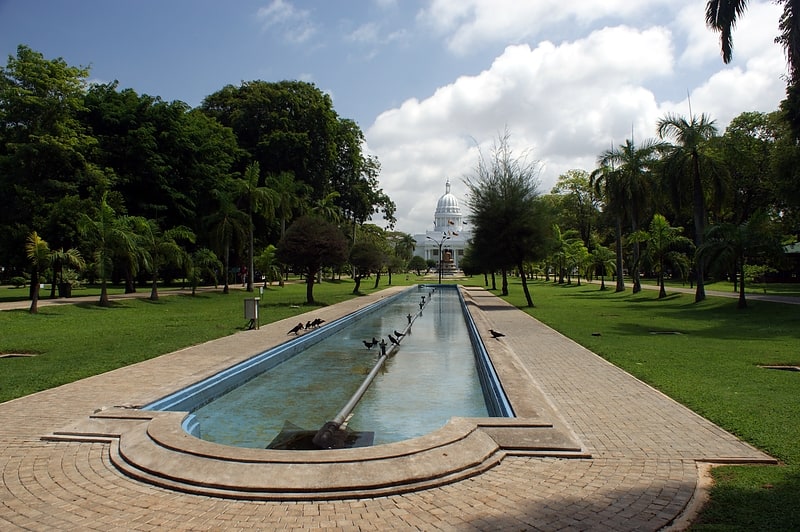
Also known as: විහාරමහාදේවී උද්යානය
State park in Colombo, Sri Lanka. Viharamahadevi Park is a public park located in Cinnamon Gardens, Colombo, situated in front of the colonial-era Town Hall in Sri Lanka. It was built by the British colonial administration and is the oldest and largest park of Colombo. The park was originally named "Victoria Park" after Queen Victoria but was renamed after Queen Viharamahadevi, the mother of King Dutugamunu on July 18, 1958.
During World War II it was occupied by the British Army with Australian 17th Brigade based at Victoria Park. After the war the park was restored and open to the public in 1951.
There used to be a cricket ground in the park, which was used for first-class cricket between 1927 and 1995. Ceylon played against a touring English team there in 1927 and against an Australian team in 1935.
The park features include a huge Buddha statue which replaced the statue of Queen Victoria which originally stood there, and a series of water fountains. It also includes a mini zoo, a children's play area and a BAC Jet Provost. There are Muscovy ducks in the park. They swim in the artificial lake and walk on the grass beside it.
Viharamahadevi Park is the only large-scale public park in Colombo, and is maintained by the Colombo Municipal Council. Located at its western end is the Cenotaph War Memorial, Colombo and the Colombo Public Library. The Vihara Maha Devi Park Open Air Stadium is a venue for concerts and public events.[17]
Address: Dharmapala Mawatha, 00700 කොළඹ (District 3)
Basilica of Our Lady of Lanka
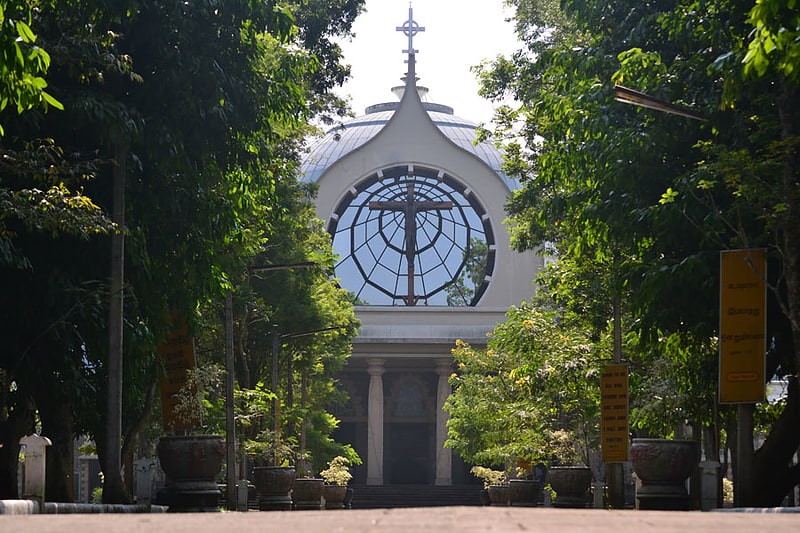
Also known as: ලංකාවේ අප ස්වාමිදුවගේ බැසිලිකාව
Basilica in Ragama, Sri Lanka. The Basilica of Our Lady of Lanka is a Roman Catholic church with basilica status in Tewatte, Sri Lanka. Being thus in a somewhat distant suburb of Colombo, it comes under the purview of the Roman Catholic Archdiocese of Colombo and is a site of pilgrimage for Sri Lankan Catholics. The church is home to the venerated statue of Our Lady of Lanka.[18]
Address: Lankamatha Road, Colombo
World Trade Center Colombo
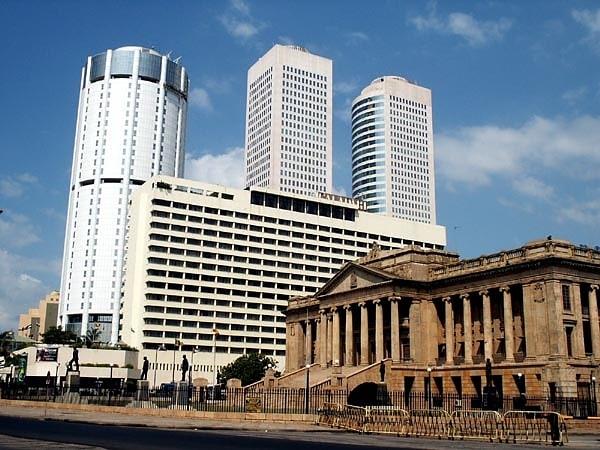
Also known as: ලෝක වෙළෙඳ මධ්යස්ථානය
Building complex in Colombo, Sri Lanka. The World Trade Center is a 152-metre-tall twin building in Colombo, Sri Lanka. The 39-storey towers are built over a 4-storey retail podium, and thus each tower has a total floor count of 43. WTCC is owned and managed by Overseas Realty Ceylon PLC.
The WTCC was the vision of Singaporean, Shing Pee Tao, the founder of Shing Kwan Group, a commodities, shipping and real estate company. Tao acquired ORCPLC, a listed company in the Colombo Stock Exchange, which owned the undeveloped site at Echelon Square, Colombo. Formal planning approval was granted in January 1992 and groundbreaking took place in September.
The building was constructed using pre-fabricated pre-cast concrete panels for the outer walls, columns and the beam structures. The panels were bolted to each other and to the concrete floor become poise facade of the building. Loads were also designed to be carried by a column-beam structure and the core walls were the lifts, toilets and fire staircase located in the centre of the building.
The building which was under construction, was damaged in January 1996 as a result of LTTE suicide attack on the Central Bank, which killed 91 people and injured over 1,400.
The WTCC was officially opened on 12 October 1997 by President Chandrika Kumaratunga. On Wednesday, 15 October (three days after the opening), the Liberation Tigers of Tamil Eelam (LTTE) detonated a truck laden with explosives in the adjoining hotel car park, causing significant damage to the side of the western tower. The structure however remained intact due to its construction using cellate high strength precast panels. The attack was modelled on the 1993 World Trade Center bombing in New York. The WTCC was specifically targeted by the LTTE as it was the country's tallest building and the symbolic centre of its economy. A full restoration of the building was completed in approximately six months and the building was re-commissioned in June 1998.
Current tenants include the Colombo Stock Exchange, Securities Exchange Commission, Asian Broadcasting Corporation (Hiru TV and various radio stations including GOLD FM) and the Board of Investment of Sri Lanka.[19]
Address: 1 Bank of Ceylon Mawatha, Colombo (District 2A)
Independence Memorial Hall

Also known as: නිදහස් අනුස්මරණ ශාලාව
Historical landmark in Colombo, Sri Lanka. Independence Memorial Hall is a national monument in Sri Lanka built for commemoration of the independence of Sri Lanka from the British rule with the restoration of full governing responsibility to a Ceylonese-elected legislature on 4 February 1948. It is located in Independence Square in the Cinnamon Gardens, Colombo. It also houses the Independence Memorial Museum.
The monument was built at the location where the formal ceremony marking the start of self-rule, with the opening of the first parliament by Prince Henry, Duke of Gloucester occurred at a special podium on 4 February 1948.
Located at the head of the monument is the statue of the first prime minister of the country Rt. Hon. Don Stephen Senanayake "The Father of the Nation". Most of the annual National Independence Day celebrations have been held here. Apart from a monument it served as the ceremonial assembly hall for the Senate of Ceylon and the House of Representatives of Ceylon until the parliament was moved to the new parliament complex. Currently it is the venue for religious events and annual national day celebrations.[20]
Address: Independence Square, 00700 Colombo (District 3)
Dehiwala-Mount Lavinia
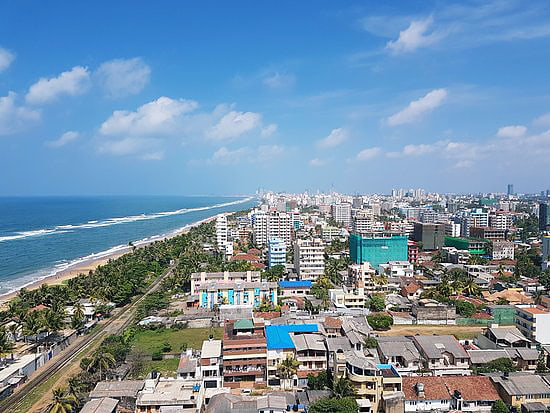
City in Sri Lanka. Dehiwala-Mount Lavinia, population 245,974 is the largest suburb of the City of Colombo, and covers an extent of 2109 hectares. It lies south of the Colombo Municipal Council area and separated from it by the Dehiwala canal which forms the northern boundary of DMMC. Its southern limits lie in Borupana Road and the eastern boundary is Weras Ganga with its canal system and including some areas to its east. This town has extensive population and rapid industrialisation and urbanization in recent years. It is home to Sri Lanka's National Zoological Gardens, which remains one of Asia's largest. Colombo South Teaching Hospital, Kalubowila and Colombo Airport, Ratmalana are some important landmark in this area. Dehiwela-Mount Lavinia and Sri Jayawardenapura Kotte being two large suburban centres of the city of Colombo function together as one large urban agglomeration in the Region. The overspill from the City in residential and commercial uses of land have rapidly urbanised these suburban centers. Dehiwela-Mount Lavinia and Sri Jayawardenpaura along with Colombo Municipal Council form the most urbanised part of the core area of the Colombo Metropolitan Region. Dehiwala and Mount Lavinia lie along the Galle Road artery, which runs along the coast to the south of the country.[21]
National Museum of Natural History
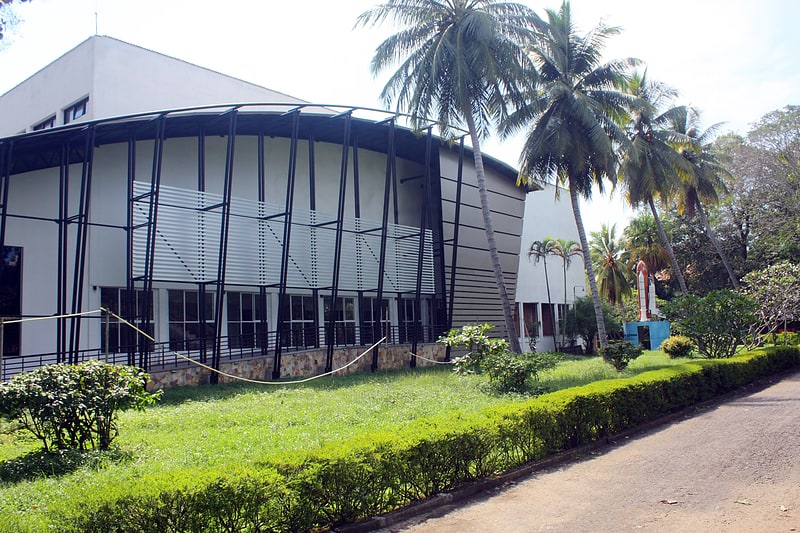
The National Museum of Natural History is a museum that covers the natural heritage of Sri Lanka. The museum is located closer to the National Museum of Colombo. It was established on September 23, 1986 and became only one museum in Sri Lanka that represents natural history and natural heritage.
The National Museum of Natural History exhibits rare and threatened with extinction such as natural heritage of plant and animal species endemic to Sri Lanka, over 5,000 specimens of mammals, jurassic period indigenous fossils and various kinds of geological rocks.[22]
Address: Nelum Pokuna Mawatha, Colombo (District 3)
Sri Lanka Cricket Museum
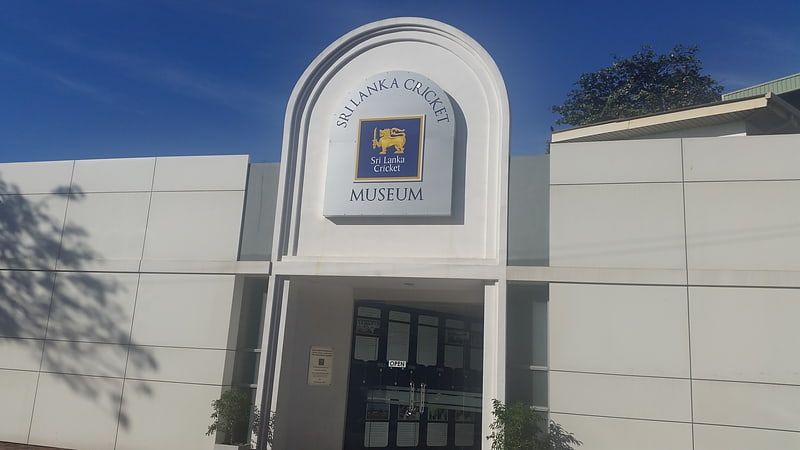
Sri Lanka Cricket Museum is located at Maitland Place, Colombo, Sri Lanka, at the former Asian Cricket Council headquarters, adjacent to the headquarters of Sri Lanka Cricket.
It was officially opened by Minister of Sports Harin Fernando on 20 February 2019 and is operated by Sri Lanka Cricket.
The Sri Lanka Cricket Museum covers the history of cricket in the country. The museum documents the country's journey towards becoming a test nation and its achievements made during the pre and post test era. It includes a 'Hall of Fame', as well as significant cricketing ‘moments’ and ‘turning points’ in Sri Lanka's cricketing history. The gallery contains 1996 World Cup trophy, 2014 T20 World Cup trophy.[23]
Nelum Pokuna Mahinda Rajapaksa Theatre
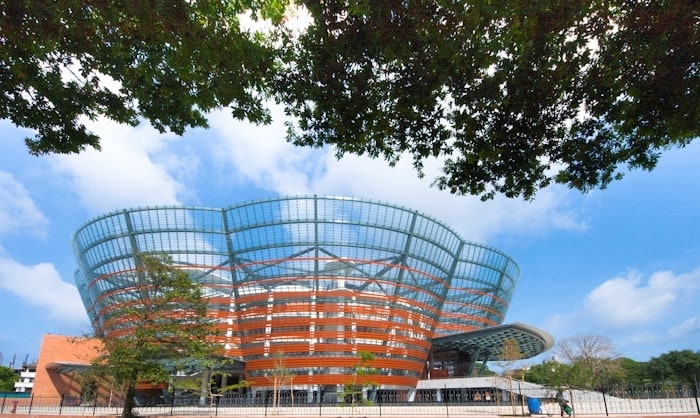
Also known as: නෙළුම් පොකුණ මහින්ද රාජපක්ෂ රඟහල
Theatre in Colombo, Sri Lanka. The Nelum Pokuna Mahinda Rajapaksa Theatre is a performing arts centre in Colombo, Sri Lanka. The theatre opened on 15 December 2011.[24]
Address: Colombo, Ananda Coomaraswamy Mawatha, Colombo 07, Sri Lanka
Wolvendaal Church

Christian church in Colombo, Sri Lanka. Wolvendaal Church is located in Pettah, a neighbourhood of Colombo. It is one of the most important Dutch Colonial era buildings in Sri Lanka, and is one of the oldest Protestant churches still in use in the country.[25]
Address: Wolfendhal Street, 01100 Colombo (District 2A)
Water World Sri Lanka
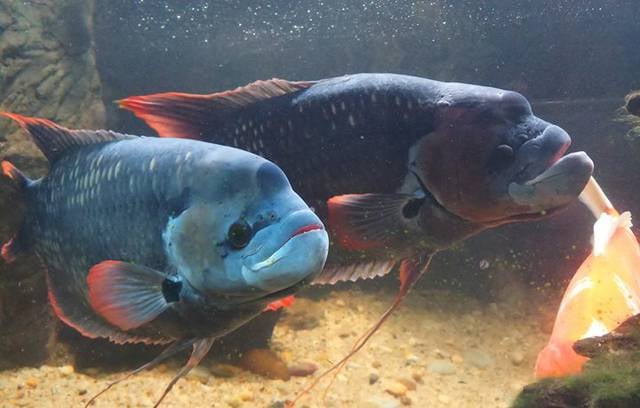
Amusement, Aquarium, Amusement park
Address: 95, Biyagama Road, Colombo
Independence Memorial Museum

Memorial park in Colombo, Sri Lanka. Independence Memorial Museum in Colombo, Sri Lanka is located in the basement of the Independence Memorial Hall, Independence Square in the Cinnamon Gardens. It is maintained by the Department of National Museum. The museum was established with the objective honouring national heroes who were instrumental in the country gaining independence from the British Rule. The Museum has a series of busts, display boards depicting the names, images and information of the political leaders, clergy and the lay patriots who were at the centre of the struggle for independence.[26]
Address: 7 Independence Ave, 00700 Colombo (District 3)
St. Lucia's Cathedral
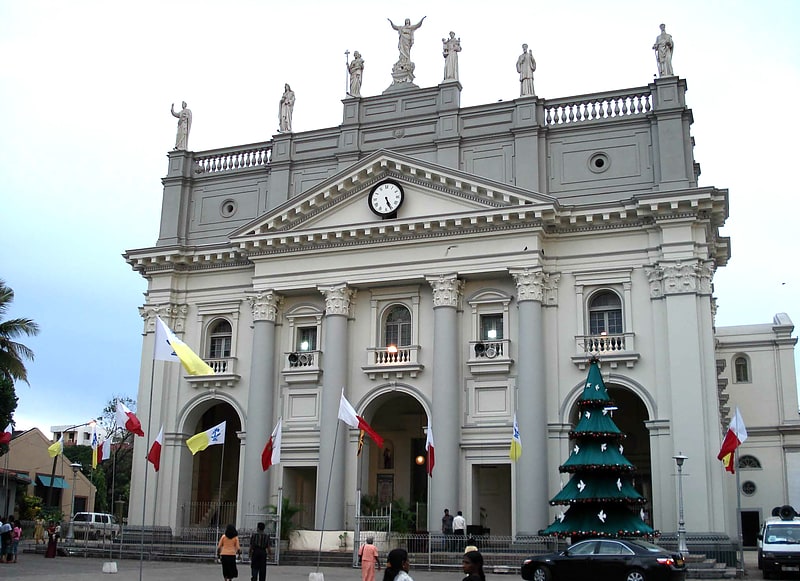
Also known as: කොටහේන ශාන්ත ලුසියා ආසන දෙව්මැදුර
Grand 19th-century Roman Catholic church. St. Lucia's Cathedral is the seat of the Archbishop of the Roman Catholic Archdiocese of Colombo in Sri Lanka. The Cathedral is located at Kotahena, in the north east of Colombo, on 18,240 sq. ft. of land. It traces its origins to a small structure for worship built during the Dutch occupation.[27]
Address: St Benadicts Street, Colombo (District 1)
Bellanwila Rajamaha Viharaya
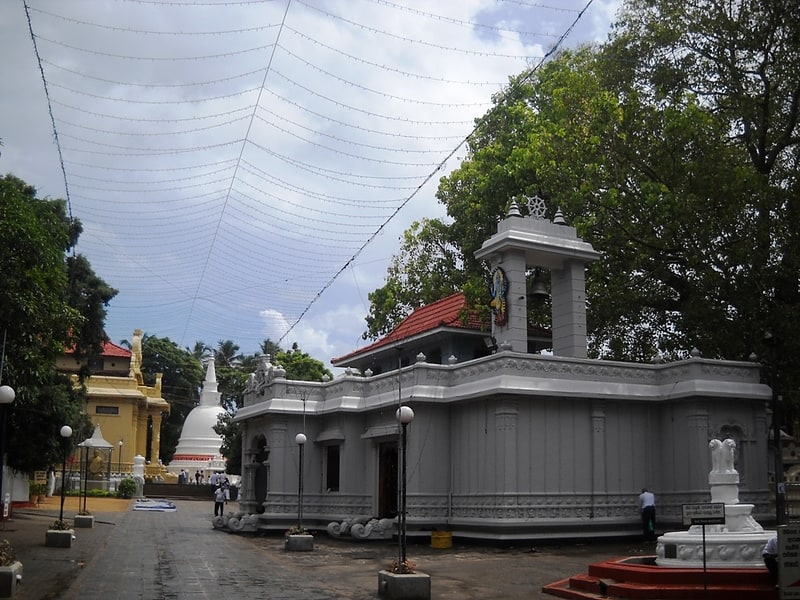
Also known as: බෙල්ලන්විල විහාරය
Temple in Boralesgamuwa, Sri Lanka. Bellanwila Rajamaha Viharaya is a Buddhist temple situated in Bellanwila, Colombo District, Sri Lanka. Located around 12 km south to the Colombo city, near Dehiwala - Maharagama road, the temple attracts hundreds of devotees daily and is famous for its annual Esala Perehera festival which usually takes place in the month of August or September. One of the most venerated Buddhist temples in Sri Lanka, many devotees flock to worship the sacred Bo tree of Bellanwila Rajamaha Vihara, which is considered to be one of the first offshoots of Jaya Sri Maha Bodhi in Anuradhapura, Sri Lanka. The present chief incumbent of Bellanwila Rajamaha Vihara is Ven. Bellanwila Dhammaratana Nayaka Thera.[28]
Address: Dehiwela-Maharagama Road, Colombo
Methodist Church

Methodist church in Colombo, Sri Lanka. Methodist Church in Pettah is a Methodist church situated in Colombo, Sri Lanka. It is considered as the first Methodist church, established in Sri Lanka as well as Asia. The church building has been formally recognised by the Government as an archaeological protected monument in Sri Lanka. The designation was declared on 17 May 2013 under the government Gazette number 1811.[29]
Address: 132 Dam St, 01000 Colombo (District 2A)
Sambodhi Chaithya
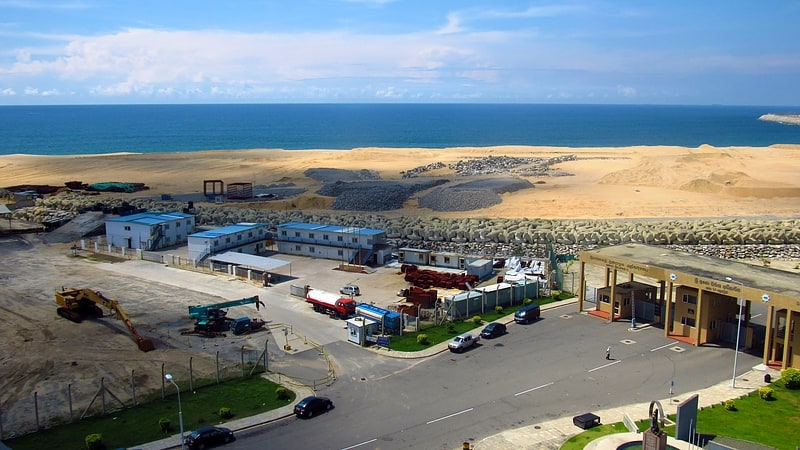
Shrine in Colombo, Sri Lanka. Sambodhi Chaithya is a stupa, a Buddhist shrine, built with reinforced concrete. The stupa is located in Colombo Harbour, Sri Lanka.
It was designed by renowned Sri Lankan engineer A. N. S. Kulasinghe and construction began in 1956 to commemorate the Sambuddhatva jayanthi by the Colombo Port Commission and completed by the Colombo Port Authority. Built on a platform supported by two interlocking arches, the stupa is place above the Marine Drive at the entrance of the Colombo Harbour. This main road leading to the harbour has since been renamed Chaithya Road after the stupa. The walkway has 123 steps.[30]
Address: Colombo Harbour, Colombo (District 2A)
Currency museum
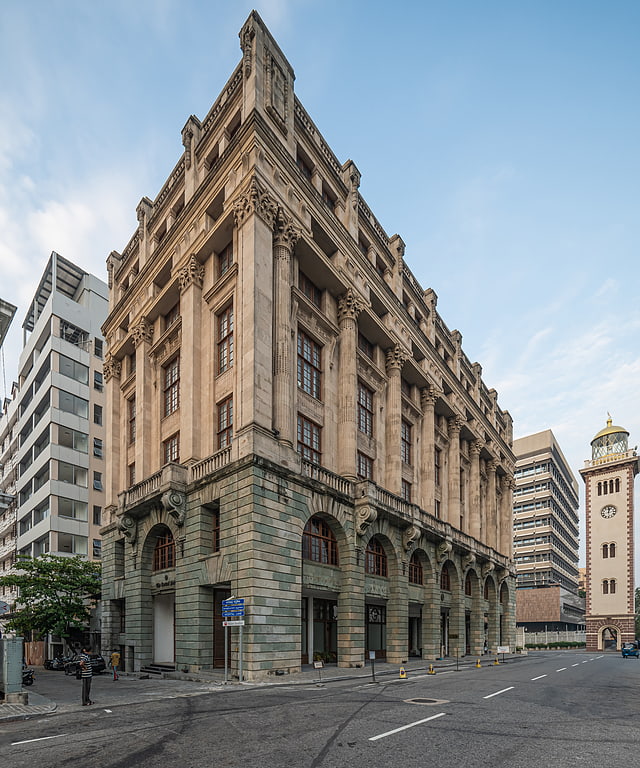
Museum. Economic History Museum of Sri Lanka is located in the Central Point building, 54 Chatham Street, Colombo Fort.[31]
Address: 54 Chatham Street, Colombo (District 2A)
Beira Lake

Also known as: බේරෙ වැව
Lake in Sri Lanka. Beira Lake is a lake in the center of the city of Colombo in Sri Lanka. The lake is surrounded by many large businesses in the city. It initially occupied approximately 1.65 km2 of land 100 years ago and this has since been reduced to 0.65 km2 today due to various reasons. During the colonial era of the Portuguese, Dutch and the English the lake was used for a wide variety of purposes. It still retains its Portuguese name. It is connected to many intricate canals which provided an easy way of transporting goods within the city and suburban cities.[32]
Lotus Tower
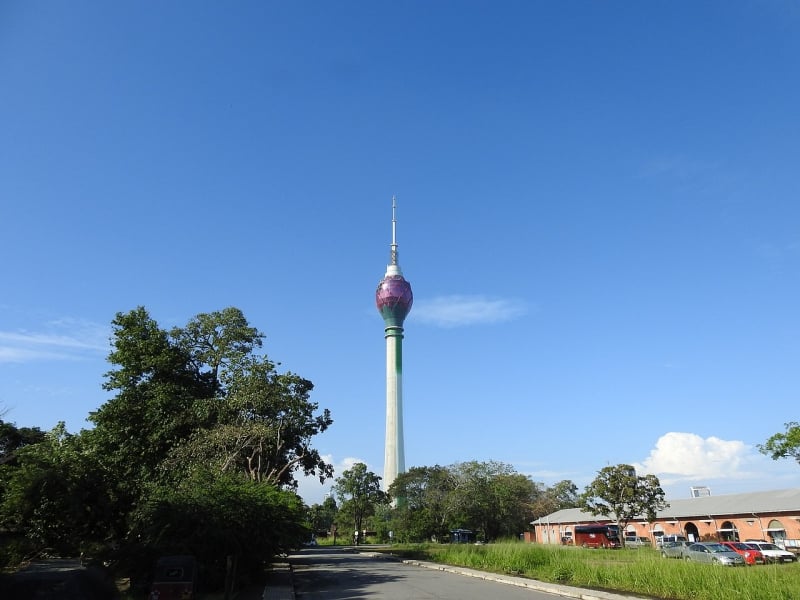
Also known as: නෙළුම් කුළුණ
Tower in Colombo, Sri Lanka. Lotus Tower, also referred to as Colombo Lotus Tower, is a tower 350 m high, located in Colombo, Sri Lanka. It has been called a symbolic landmark of Sri Lanka. As of 2019, the tower is the tallest self-supported structure in South Asia; the second tallest structure in South Asia after the guy-wire-supported INS Kattabomman in India; the 11th tallest tower in Asia and the 19th tallest tower in the world. It was first proposed to be built in the suburb of Peliyagoda but later the Government of Sri Lanka decided to change the location. The lotus-shaped tower is used for communication, observation and other leisure facilities. Construction costed $104.3 million.[33]
Address: D. R. Wijewardene Mawatha, Colombo (District 2B)
National Museum of Colombo
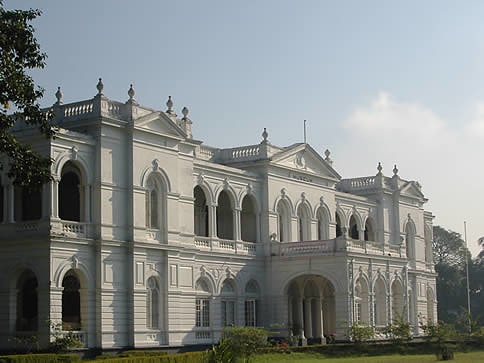
Also known as: කොළඹ ජාතික කෞතුකාගාරය
Museum in Colombo, Sri Lanka. The Colombo National Museum, also known as the Sri Lanka National Museum, is a museum in Colombo and the largest in Sri Lanka. Founded in 1877 and maintained by the Department of National Museums, it holds collections of significant importance to Sri Lanka, such as the regalia of the Kandyan monarchs, as well as many other exhibits relating the country's cultural and natural heritage.[34]
Address: Cinnamon Gardens, Colombo 7, Colombo